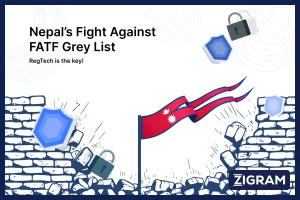In today’s global financial landscape, the fight against money laundering and terrorist financing is a top priority for governments and financial institutions. As a result, Anti-Money Laundering (AML) regulations have become increasingly stringent, and financial institutions are required to have robust onboarding processes in place. AML onboarding refers to the procedures and practices employed by financial institutions to verify the identity of their customers, assess the associated risks, and ensure compliance with AML regulations. This article will delve into the fundamentals of AML onboarding and highlight the key elements that contribute to effective onboarding processes.

Customer Due Diligence (CDD):
Customer Due Diligence (CDD) forms the foundation of AML onboarding. It involves the process of gathering information about customers to establish their true identities, assess their potential risk level, and ascertain the nature and purpose of the business relationship. The CDD process typically includes collecting identification documents, verifying the authenticity of those documents, and conducting enhanced due diligence for high-risk customers. The aim is to ensure that the financial institution has sufficient knowledge about its customers to detect and prevent any suspicious or illegal activities.
Risk Assessment:
Conducting a comprehensive risk assessment is another critical component of AML onboarding. Financial institutions must evaluate the potential risks associated with each customer and transaction. This assessment considers factors such as the customer’s geographic location, business activities, sources of funds, and previous transaction history. By assigning a risk rating to each customer, financial institutions can tailor their due diligence efforts accordingly. High-risk customers may require additional scrutiny and ongoing monitoring, while low-risk customers can undergo standard procedures. Regular review and updating of risk assessments are essential to ensure they remain relevant and up to date.
AML Policies and Procedures:
Financial institutions must establish and maintain robust AML policies and procedures to guide their onboarding processes. These policies should outline the institution’s commitment to compliance, set out the procedures for customer identification, due diligence, and risk assessment, and provide guidelines for reporting suspicious activities. It is essential to ensure that these policies are aligned with the latest regulatory requirements and are effectively communicated to all relevant staff members. Regular training and awareness programs are crucial to ensure that employees understand their roles and responsibilities in the AML onboarding process.
Technological Solutions:
Advancements in technology have significantly impacted AML onboarding processes. Financial institutions are increasingly adopting innovative solutions such as automated identity verification, data analytics, and artificial intelligence to streamline and enhance their onboarding procedures. These technologies enable institutions to perform real-time checks, analyze large volumes of data for suspicious patterns, and flag potential risks more efficiently. The use of technology not only improves the efficiency and accuracy of onboarding but also helps in meeting regulatory obligations by maintaining robust audit trails and documentation.
Ongoing Monitoring and Reporting:
AML onboarding is not a one-time process but requires continuous monitoring of customer activities. Financial institutions must establish mechanisms to detect and report any suspicious transactions or behaviour. Transaction monitoring systems and data analytics play a vital role in identifying patterns that may indicate money laundering or other illicit activities. If any suspicious activities are detected, financial institutions must report them to the appropriate regulatory authorities promptly. Ongoing monitoring ensures that the institution remains vigilant and can respond proactively to emerging risks.
Conclusion:
AML onboarding is a critical aspect of compliance for financial institutions in the fight against money laundering and terrorist financing. By implementing effective customer due diligence, conducting risk assessments, adhering to robust AML policies and procedures, leveraging technology, and maintaining ongoing monitoring and reporting, institutions can mitigate the risks associated with financial crime. Compliance with AML regulations not only safeguards the institution’s reputation but also contributes to the overall integrity and stability of the global financial system.
ZIGRAM is the one-stop solution for all your compliance needs. Try our FREE DEMO to experience what you’re missing in your AML and KYC processes!
- #AMLOnboarding
- #CustomerDueDiligence
- #RiskAssessment
- #AMLRegulations
- #FinancialInstitutions
- #CDDProcess
- #AMLCompliance
- #TechnologyInAML
- #DeFiPlatforms
- #TransactionMonitoring
- #SuspiciousActivityReporting
- #GlobalFinancialIntegrity
- #FinancialCrimePrevention
- #AMLTechnologies
- #RegulatoryCompliance
- #RiskManagement






